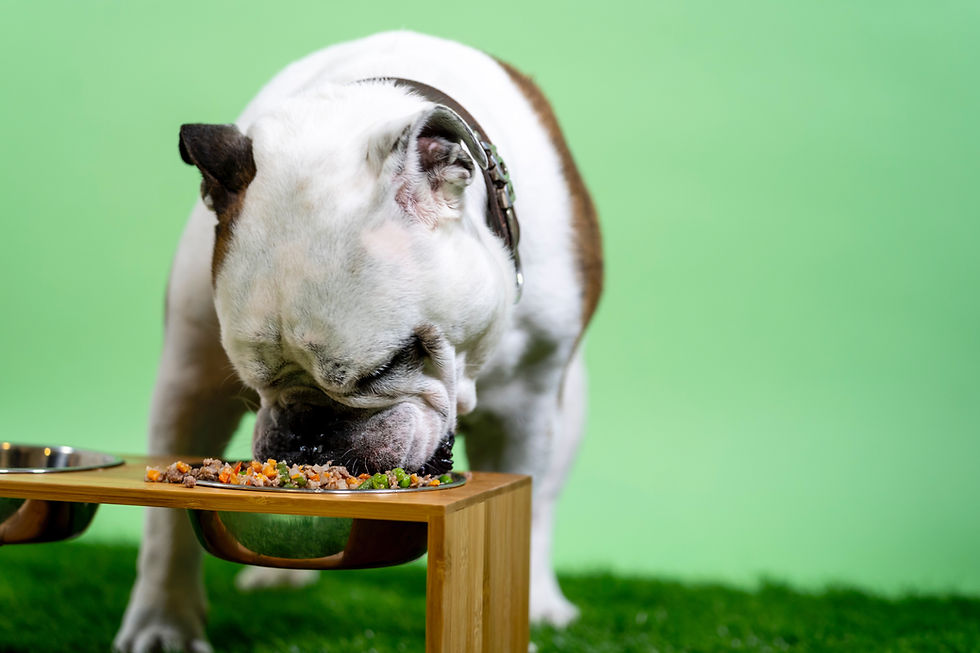The Best Bowls for Dogs and Cats: How to Choose the Right One for Your Pet
- kharrison1010
- Jul 24
- 2 min read
Choosing the right food and water bowls for your dog or cat might seem simple—but it can actually make a big difference in your pet’s health, comfort, and hygiene. From materials and shapes to special features like slow-feeders or raised stands, the right bowl can help reduce mess, prevent strain, and even support better digestion.

Here’s a helpful guide to choosing the best bowls for your furry friend:
1. Stainless Steel Bowls: Durable and Hygienic
Stainless steel is often the top choice for both dogs and cats. These bowls are long-lasting, rust-resistant, and easy to sanitize—making them ideal for everyday use. Look for options with rubber bottoms to prevent sliding.
Best for: Most pets, especially those prone to allergies or who eat with enthusiasm.
2. Ceramic Bowls: Stylish and Stable
Ceramic bowls are heavy and come in beautiful designs, which make them great for pet parents who want something more decorative. Be sure to choose lead-free, food-safe ceramic and check regularly for chips or cracks that could harbor bacteria.
Best for: Pets who eat calmly and owners looking for aesthetic options.
3. Plastic Bowls: Affordable but Less Ideal
Plastic bowls are inexpensive and lightweight, but they can scratch easily and harbor bacteria. Some pets may also develop chin acne or allergies related to plastic. If you use plastic, clean it thoroughly and replace it regularly.
Best for: Temporary use or travel, though not recommended for long-term feeding.
4. Slow-Feeder Bowls: For Fast Eaters
Does your dog inhale their food in seconds? Slow-feeder bowls are designed with ridges or mazes that force pets to eat more slowly, which can improve digestion and reduce discomfort associated with eating too quickly.
Best for: Dogs (and some cats) who eat too fast or need a little mealtime enrichment.
5. Elevated Bowls: Comfortable Feeding Posture
Raised feeders can help reduce strain on your pet’s neck, especially for large breed dogs or senior pets with arthritis. Some cats may also benefit from slightly elevated bowls, which may facilitate a more comfortable dining experience.
Best for: Large dogs, senior pets, or pets with mobility issues.
6. Non-Spill or Weighted Bowls: Mess Prevention
If your pet is a messy eater or tends to push their bowl around, non-spill bowls or weighted bases can help keep everything in place. These are great for water bowls, too!
Best for: Puppies, kittens, or pets that play with their bowls.
7. Automatic Feeders and Water Fountains
Tech-savvy pet parents may love automatic feeders or water fountains. These options provide scheduled feedings and fresh, filtered water that many cats and dogs prefer over still water.
Best for: Busy owners, multi-pet households, and cats who have clear opinions.
Final Thoughts
The best bowl for your pet depends on their individual needs, habits, and health. Whether you’re feeding a fast-eating pup or a dainty senior cat, a thoughtful choice can make mealtime safer, cleaner, and more enjoyable. As always, make sure to clean your pet’s bowls regularly to prevent bacteria build-up—and when in doubt, opt for stainless steel!




Comments